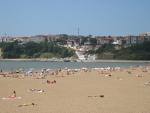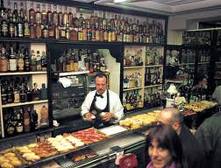 Many potential visitors to the Basque Country tend to ask about The Best Tapas Bars in town. Well, I normally answer telling them that, first of all, there´s no such thing as Tapas Bars. Most bars offer tapas or pintxos. And also, that a Tapa is not a Pintxo. To make it more complicated, a Pintxo is not a Tapa and a Tapa is not a Ración and Pintxos can be divided into Banderillas and The Rest while The Rest may have another subdivision, Pintxos You Eat With Your Hand and Pintxos Served On A Plate…it seems a bit complicated, uh?
Many potential visitors to the Basque Country tend to ask about The Best Tapas Bars in town. Well, I normally answer telling them that, first of all, there´s no such thing as Tapas Bars. Most bars offer tapas or pintxos. And also, that a Tapa is not a Pintxo. To make it more complicated, a Pintxo is not a Tapa and a Tapa is not a Ración and Pintxos can be divided into Banderillas and The Rest while The Rest may have another subdivision, Pintxos You Eat With Your Hand and Pintxos Served On A Plate…it seems a bit complicated, uh?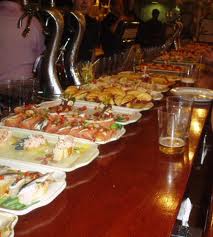
Let´s start by the very beginning: Pintxos (or pinchos) were (and still are) small portions of food that are placed on the counter and you pick them with your hand. The classic one is the Spanish Omelette, served on a piece of bread. You get into the bar, order your drink, and grab the pintxo with your hand. There´s normally a big selection of pintxos on the counter, you can have as many as you want, but the local custom is to have just one with a “zurito” (half a beer) or a glass of wine or cider. In some selected places, mainly located in the Donostia-San Sebastián area, they also offer Pintxos made on order, more elaborate, more expensive, and that are nomally eaten using a fork.
Tapas are not Pintxos. Tapas are complimentary served in many parts of Spain, for free, to go with your drink. They are more basic than a pintxo, and may also be smaller. In some places they call Tapas to Raciones. A Ración is something that is served hot, you have it seated, in an informal way, and normally share several with your friends. And is not free. You may order A Ración of Calamares, of Patatas Bravas (spicy potatoes), of Albóndigas (meatballs), Champis (mushrooms), etc…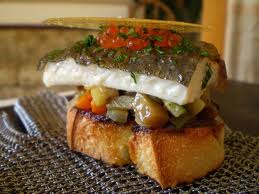
One of the effects of the Pintxos becoming more and more popular is that in many bars in San Sebastián they give you a plate and tell you to place your pintxos on it, then they charge you for them. That is an outrage!! Pintxos and drinks are always paid when you finish and should NEVER be eaten on a plate. It´s not our way and it should never be, pintxos are eaten with your hand and the etiquette says that they are paid based on an honor system: the waiter asks how many you´ve had, and you tell him the truth. No need to count…
Every year we hold a Pintxos Championship. The winner bar will be famous forever and customer will flock in to taste his small culinary preparations…For more info, a useful web is www.todopintxos.com.


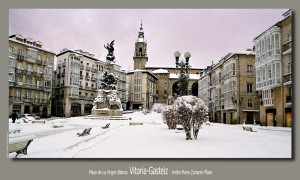 Vitoria-Gasteiz is considered the most livable city in Spain, due to its ample spaces, the high rate of trees per habitant, number of parks, low crime rate and high number of pedestrian areas. Its Old Quarter was declared a Protected Monument in 1997, and keeps the spirit of the old times. The restoration of the old cathedral, www.catedralvitoria.com, can be followed in a guided tour that explains the whole process and has won several awards as Best Restoration Project. Not far, you can have lunch at www.restauranteelportalon.com, a XV century building with a spectacular façade and a beautiful interior, and great food, of course!!. You can´t miss the excellent pintxos served at its many bars, many located in the pedestrian street Eduardo Dato (a popular one is www.sagartoki.es). And, on the way out of town, the sanctuary dedicated to the Virgin of Estibalitz, many girls are named after the matron saint of the province.
Vitoria-Gasteiz is considered the most livable city in Spain, due to its ample spaces, the high rate of trees per habitant, number of parks, low crime rate and high number of pedestrian areas. Its Old Quarter was declared a Protected Monument in 1997, and keeps the spirit of the old times. The restoration of the old cathedral, www.catedralvitoria.com, can be followed in a guided tour that explains the whole process and has won several awards as Best Restoration Project. Not far, you can have lunch at www.restauranteelportalon.com, a XV century building with a spectacular façade and a beautiful interior, and great food, of course!!. You can´t miss the excellent pintxos served at its many bars, many located in the pedestrian street Eduardo Dato (a popular one is www.sagartoki.es). And, on the way out of town, the sanctuary dedicated to the Virgin of Estibalitz, many girls are named after the matron saint of the province.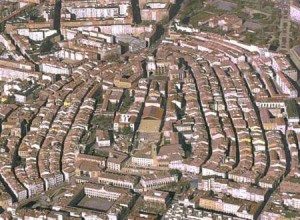
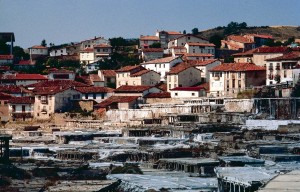
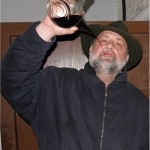 2) La Tabernilla de Pozas, in Licenciado Poza street (known as “Pozas”, the most popular street for having some drinks before the soccer matches), you´d never enter here because it doesn´t even have a sign outside.
2) La Tabernilla de Pozas, in Licenciado Poza street (known as “Pozas”, the most popular street for having some drinks before the soccer matches), you´d never enter here because it doesn´t even have a sign outside. 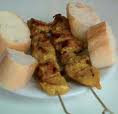
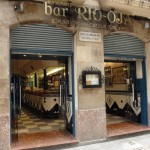
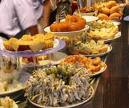 And it´s very hard to get a table before 0930PM.
And it´s very hard to get a table before 0930PM. Yet another place full of charm that you don´t normally visit when you come to the Basque Country. Located on the east end of the river of Bilbao estuary, it is the small fishing quarter that gave birth to the fancy suburbial town of Getxo.
Yet another place full of charm that you don´t normally visit when you come to the Basque Country. Located on the east end of the river of Bilbao estuary, it is the small fishing quarter that gave birth to the fancy suburbial town of Getxo. 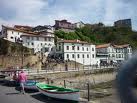 It consists of a group of typical fishermen´s houses, painted in white,
It consists of a group of typical fishermen´s houses, painted in white,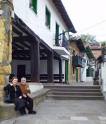 stone verandas watching them and enjoying an outdoor drink with some “caracolillos” (periwinkles?¿, small black sea snails, much appreciated over here) or fresh shrimp. Climbing the renovated stairs where young people like to sit, you will find a statue of a fisherwoman and a kind of shrine devoted to the Virgen del Carmen, as well as a small cozy square where you may want to sit down and enjoy some peanuts (with shell) and a drink and another pintxo. On top, after another image of the Virgin, there are three or four excellent fish restaurants (catch of the day, mainly), expensive but worth the experience.
stone verandas watching them and enjoying an outdoor drink with some “caracolillos” (periwinkles?¿, small black sea snails, much appreciated over here) or fresh shrimp. Climbing the renovated stairs where young people like to sit, you will find a statue of a fisherwoman and a kind of shrine devoted to the Virgen del Carmen, as well as a small cozy square where you may want to sit down and enjoy some peanuts (with shell) and a drink and another pintxo. On top, after another image of the Virgin, there are three or four excellent fish restaurants (catch of the day, mainly), expensive but worth the experience.